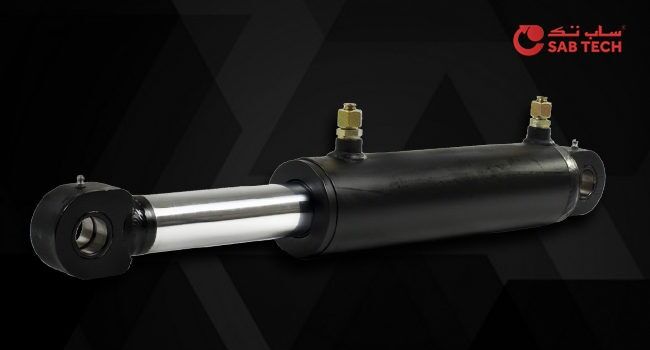How to Reduce Hydraulic Cylinder Failure and Repair Costs

The hydraulic cylinder repair cost is a portion of the total operating cost. Hydraulic equipment consists of hydraulic cylinders, pumps, motors, and valves.
It is essential to understand the underlying causes of hydraulic cylinder failures to reduce repair costs. There are several reasons for hydraulic cylinder failure, below are some major ones:
Improper Design
A suitable hydraulic cylinder design is crucial! Studies have reflected that up to 25% of failures in hydraulic equipment is due to design. In the case of hydraulic cylinders, one out of four cylinders is not adequately designed for the application it is intended to be used in. Hydraulic cylinders must be designed as per the application or required purpose to get the best of work to be done. A flawed design will cause hydraulic cylinder failure in terms of the following factors:
- Rod bending
- Rod finish
- Piston damage
- Seal damage
- Damage of external mounting
Contaminated Oil
When external particles contaminate the oil, the internal surface of the tube and exterior surface of the piston rod might get damaged. This can further lead to the premature failure of the piston seal leading to internal and external leakage significantly impacting the cylinder performance and, ultimately, failure if not treated. Therefore, preventive maintenance and the application of a return line filter is essential to avoid such issues.
Rod Bending
Insufficient rod diameter or material, improper mounting, and/or a combination of all three factors can cause the cylinder rod to bend easily. Once the rod is bent, deformed, the seal is easily damaged.
Rod Finish
Rod seal life is significantly impacted by the surface end of the cylinder rod; therefore, a low roughness in the surface can result in insufficient lubrication diminishing the seal life. Moreover, with a rough surface of the rod, the likelihood of contamination is increased, and an unacceptable level of leakage may occur.
However, there are ways to raise the service life of the rod and seals through special surface treatment of the rod through hard-chrome plating by applying nickel-chrome plating or High-Velocity Oxygen Fuel.
Another measure to protect the damage and contamination is through the installation of shrouds or bellows to protect rod surfaces.
Damaged Seal
Seal damages are widespread for cylinder failures, and this is caused by fitting mistakes, usual wear-tear due to the environmental conditions where dirt particles over time put a strain on the seals. Also, markings on the seal grooves or corrosion are other causes that may affect the seal.
When seals are damaged, they fail to hold the working pressure, thus damaged piston seals will trigger internal leakage, and rod seals will cause external leakages and then cause cylinder failure.
Side Load Capacity
Applying a high load on a hydraulic cylinder exceeding its designed load will cause the cylinder to fail promptly.
Pressure
If the designed limit working pressure of a hydraulic cylinder is exceeded, then it will damage the tube, which will cause ballooning and create internal leaking, putting an extra working load on the seal to fail.
Piston Damage
If the piston nut or piston retaining device becomes loose with the time, damage to the piston will be inevitable due to immense internal pressure. As a result, the tube will damage from the inside and be unable to hold the internal pressure.
Physical Damage
If the cylinder tube is hit from the outside, it can result in a dent inside and/or bending of the piston rod. This may cause damage to the chrome surface and with movement in and side might damage rod seals. All this damage will cause leaking and completely failing the cylinder.
Temperature Effect
The temperature may limit the choice of seal geometries or materials. Like, polyurethane seals it must be restricted to a maximum of 50°C. Fluids used in such cylinders may have less lubricity. The seals that are exposed to high temperatures or too low temperatures may have cracked and or brittle segments.
Improper Maintenance
A cylinder is a fundamental part of any hydraulic machine, which needs continuous monitoring to avoid any breakdown. For suitable performance output of the hydraulic cylinders, the oil and its temperature need to be checked frequently during usage. Also, at the time of the piston rods movement, its outer surface has to be reviewed, which may have incurred an external hit and, as a result, cause the damage of seals.
Summary
Most of the cylinder failures are due to seals, which can cause leakage, oil contamination, and external particles enter inside the cylinder. Also, misalignment is one of the significant factors of cylinder failures. Higher temperature, contamination, corrosion, chemical attack, dent on the rod, dent on the tube are also factors of cylinder failure.
Cylinder failure can be reduced through preventive maintenance such as oil testing analysis, to reveal oil contamination, external particle contamination, degradation of fluid viscosity, corrosion, and chemical attack. Hence, the change of fluid at recommended intervals prevents cylinder failure. Lastly, visual inspection for leakages, rod damages, tubes, and corrosion can avoid premature or sudden cylinder failure.